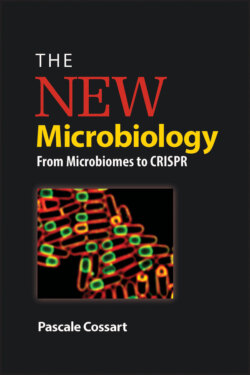Читать книгу The New Microbiology - Pascale Cossart - Страница 14
Noncoding RNAs
ОглавлениеNoncoding RNAs vary widely in size, ranging from tens to hundreds or even thousands of nucleotides. They can interact quite efficiently with other RNAs or even with DNA, as well as with some proteins. They can sometimes act as antisense RNA, even if the noncoding RNA and its target are not entirely complementary. They often prevent mRNA translation by attaching themselves to the translation initiation site. But they can also stimulate translation by attaching to the region of the RNA situated upstream of the genes and changing its structure and configuration in order to stimulate gene translation—for example, by uncoiling a formerly hidden region that prevents ribosomes from accessing their site of action. Noncoding RNA can also bind to proteins, sequester them, and thus prevent them from acting. This situation is thought to be uncommon in nature, although a few examples are well documented, for instance, the CsrA protein that is sequestered by small CsrB RNA in E. coli.
